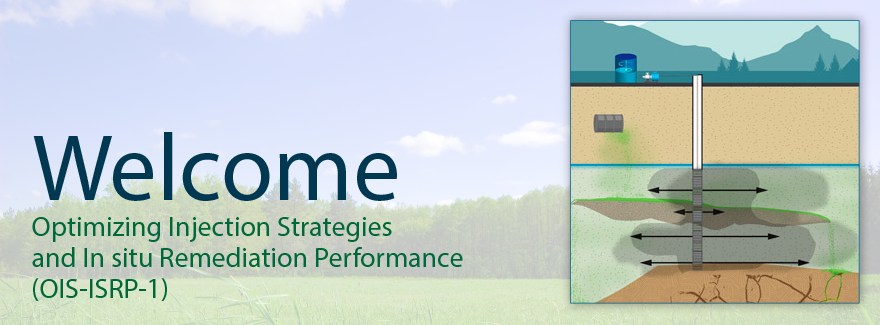
Errata Statement to ITRC OIS-ISRP GuidancePlease ReadThe Interstate Technology & Regulatory Council (ITRC) published an update to the ITRC Optimizing Injection Strategies and In Situ Remediation Performance Guidance Document on 7/21/2022. The published update includes clarifications and corrections regarding the following:
If you have any questions about the update or Guidance Document itself, please email us directly at [email protected]. ITRC (Interstate Technology & Regulatory Council). 2020. Optimizing Injection Strategies and In situ Remediation Performance. OIS-ISRP-1. Washington, D.C.: Interstate Technology & Regulatory Council, OIS-ISRP Team. |
In situ remedies using amendments delivered to the subsurface can be effective, challenges with their implementation can lead to technologies failing to achieve performance or remedial objectives. The Optimizing Injection Strategies and In Situ Remediation Performance (OIS-ISP-1) guidance describes how treatment ineffectiveness can be avoided through effective upfront characterization and design. Additionally, in-progress enhancements to both delivery technologies and amendments can improve performance. Each in situ remedial action requires collection, analysis, and evaluation of the treatment technology, site-specific subsurface characteristics, and groundwater chemical properties to develop an adequate remedial design-level conceptual site model.
There are many types of in situ remediation amendments and emplacement technologies, and each site provides unique challenges that can limit the effectiveness of the in situ remedy. The importance of proactive planning, including using processes such as site characterization analysis, bench- and field-testing and/or design optimization testing, and performance evaluation, cannot be overemphasized. Many challenges encountered during in situ remediation can be overcome with a thorough understanding of the contaminant phase and distribution, site hydrogeology and biogeochemistry, and the amendment’s physical and chemical characteristics. All technologies have limitations, and limitations can be addressed, sometimes through combining or sequencing two or more treatment technologies, potentially including alternative or supplemental remedies, or monitored natural attenuation.
This guidance provides the state of the practice based on firsthand knowledge and experiences for a broad audience, including environmental consultants, responsible parties, federal and state regulators, and community and tribal stakeholders.
This guidance includes:
- Remedial Design Characterization, which discusses data required to refine the CSM, remedial design, and implementation plan.
- Amendment, Dose, and Delivery Design, which discusses the iterative and cyclical process of a remedial design.
- Implementation, Monitoring, and Interpretation, which discusses assessment of remedial performance, refinement of the design, and implementation.
- Regulatory Perspectives, which discusses statutory and regulatory challenges and how to address them to improve the chance of success.
- Community and Tribal Stakeholder Considerations, which discusses how to engage with stakeholders before, during, and after a project.
This guidance also includes additional information on the following topics:
- Amendments and Other Additives
- Commonly Encountered Issues Associated with Remedial Design Characterization
- Characterization Parameters for In situ Treatment Remedies
- Injection Fact Sheets
- Case Studies
- Performance Evaluation and Optimization of In situ Remediation Using Amendment Delivery
If you are visiting this site for the first time please review the Introduction of this guidance. All users may find Navigating this Website helpful.
Published by the Interstate Technology & Regulatory Council, February 2020


